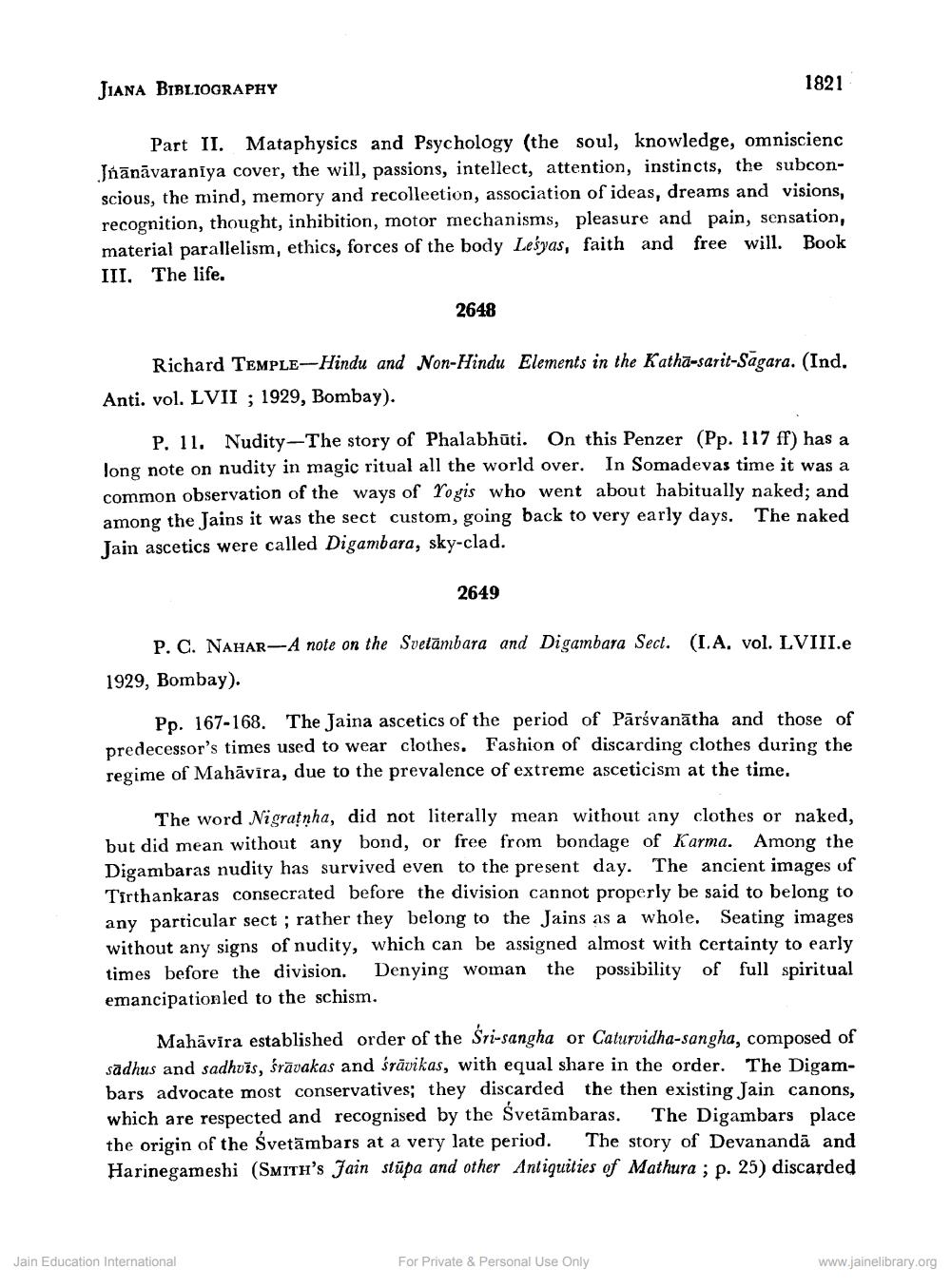________________
JIANA BIBLIOGRAPHY
1821
Part II. Mataphysics and Psychology (the soul, knowledge, omniscienc Jńānāvaraniya cover, the will, passions, intellect, attention, instincts, the subconscious, the mind, memory and recolleetion, association of ideas, dreams and visions, recognition, thought, inhibition, motor mechanisms, pleasure and pain, sensation, material parallelism, ethics, forces of the body Leśyas, faith and free will. Book III. The life.
2648
Richard TEMPLE-Hindu and Non-Hindu Elements in the Kathā-sarit-Sāgara. (Ind. Anti. vol. LVII ; 1929, Bombay).
P. 11. Nudity-The story of Phalabhūti. On this Penzer (Pp. 117 ff) has a long note on nudity in magic ritual all the world over. In Somadevas time it was a common observation of the ways of Yogis who went about habitually naked; and among the Jains it was the sect custom, going back to very early days. The naked Jain ascetics were called Digambara, sky-clad.
2649
P. C. Nahar--A note on the Svetämbara and Digambara Sect. (I.A. vol. LVIII.e 1929, Bombay).
Pp. 167-168. The Jaina ascetics of the period of Pārsvanātha and those of predecessor's times used to wear clothes. Fashion of discarding clothes during the regime of Mahāvīra, due to the prevalence of extreme asceticism at the time.
The word Nigrațnha, did not literally mean without any clothes or naked, but did mean without any bond, or free from bondage of Karma. Among the Digambaras nudity has survived even to the present day. The ancient images of Tirthankaras consecrated before the division cannot properly be said to belong to any particular sect ; rather they belong to the Jains as a whole. Seating images without any signs of nudity, which can be assigned almost with certainty to early times before the division. Denying woman the possibility of full spiritual emancipation led to the schism.
Mahāvira established order of the Sri-sangha or Caturvidha-sangha, composed of sādhus and sadhuis, śrāvakas and śrāvikas, with equal share in the order. The Digambars advocate most conservatives; they discarded the then existing Jain canons, which are respected and recognised by the Svetämbaras. The Digambars place the origin of the Svetāmbars at a very late period. The story of Devanandā and Harinegameshi (SMITH's Jain stūpa and other Antiquities of Mathura ; p. 25) discarded
Jain Education International
For Private & Personal Use Only
www.jainelibrary.org




